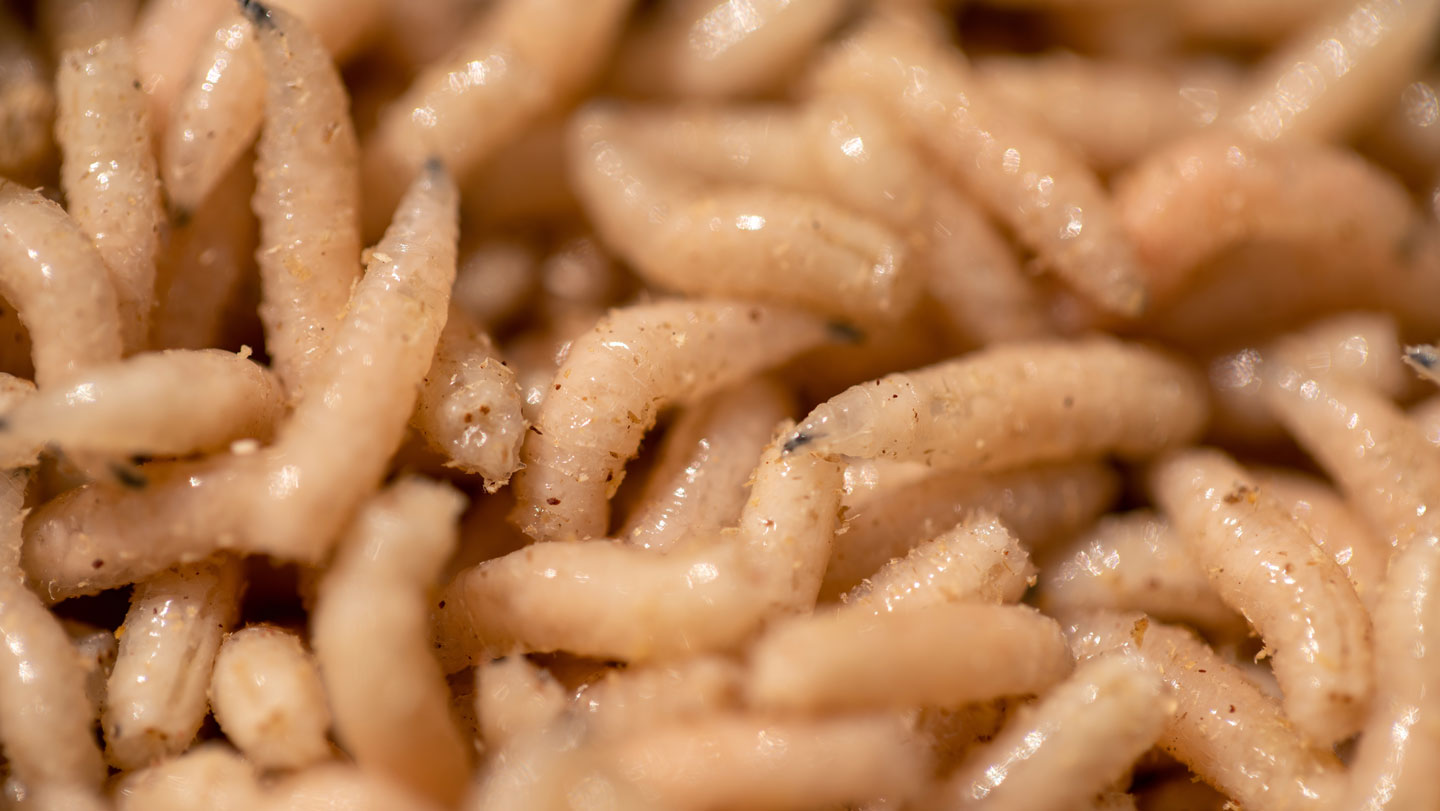
The original paleo diet might have included fewer succulent steaks and more juicy maggots.
Neandertals are often depicted at the top of the food chain for their time, consuming as much meat as lions or hyenas. But maggots growing on rotting meat might have been the real signature dish of the Neandertal diet, researchers report July 25 in Science Advances.
The idea that Neandertals were extreme carnivores comes partly from the high levels of a specific type of nitrogen called N-15 in their bones. Nitrogen has two stable forms. N-14 is lighter and a lot more common in nature, while N-15 is heavier and much rarer.
When an animal eats a plant with both types of nitrogen, it will keep more N-15 than N-14 in its body after digestion. If that animal gets eaten, its predator will have an even higher proportion of N-15. That makes this molecule more prominent in animals that eat a lot of meat, says Melanie Beasley, a biological anthropologist at Purdue University in West Lafayette, Ind.
The proportion of N-15 to N-14 found in Neandertal bones is similar to that found in animals like hyenas, which eat almost exclusively meat, Beasley says.
But humans can’t consume as much meat as specialized carnivores, says Karen Hardy, a prehistoric archeologist at the University of Glasgow in Scotland. Without a balanced diet, the human body transforms protein into energy instead of using it to develop muscle, hormones and more. This creates toxic waste products that can cause nausea, diarrhea and even death.
So, if Neandertals probably couldn’t eat as much meat as lions or hyenas, where does all the N-15 come from?
Rotting meat. This idea, suggested by anthropological archaeologist John Speth of the University of Michigan in Ann Arbor, was based on ethnographic records of the eating habits of Indigenous communities with similar lifestyles to those of Neandertals.
Beasley saw Speth’s talk on this idea and proposed a collaboration. She was starting a project to test if muscle decomposition could be used to estimate time of death. She suggested these experiments could also be used to look at the N-15 content of the decomposing muscles. This could be similar, she reasoned, to the rotting animal carcasses Neandertals might have consumed.
For over two years, Beasley collected muscle from cadavers donated for scientific research that had been left out to decompose. Out of curiosity, she also analyzed the maggots growing on the bodies. The proportion of N-15 to N-14 among almost 400 fly larvae growing on putrefying flesh was much higher than that of the decomposed tissue alone. In fact, it was higher than that of any other animal tissue analyzed.
As the meat ferments, the N-14 is probably evaporating in the form of compounds like ammonia, increasing the proportion of N-15 the maggots are eating and retaining in their bodies. As they consume this rotting flesh, the maggots also convert it into “a fatty additive substance, so that when you’re eating it, you’re getting not only the lean meat, but you’re getting fat with it,” Beasley says. “It’s a more complete, nutritious food item.”
Maggots seemed to be the secret sauce to the Neanderthal diet puzzle. And eating them probably would not have been a stomach-churner. Traditional Indigenous practices of consuming fermented meat and the insects that live in it are perfectly safe, she says.
Though it is likely, there is no archeological evidence of this proposed maggot-eating behavior in Neandertals, says Manuel Domínguez-Rodrigo, an archeologist at Rice University in Houston. Looking at how much heavy nitrogen is in the bones of groups known to eat putrefied meat would help support this hypothesis, he says.
To Hardy, the idea that these hominids ate maggots is “an absolute no-brainer, because you put a bit of meat out, the maggots come, you walk up to the bit of meat, and you collect your food. I mean, it just makes so much sense.”
